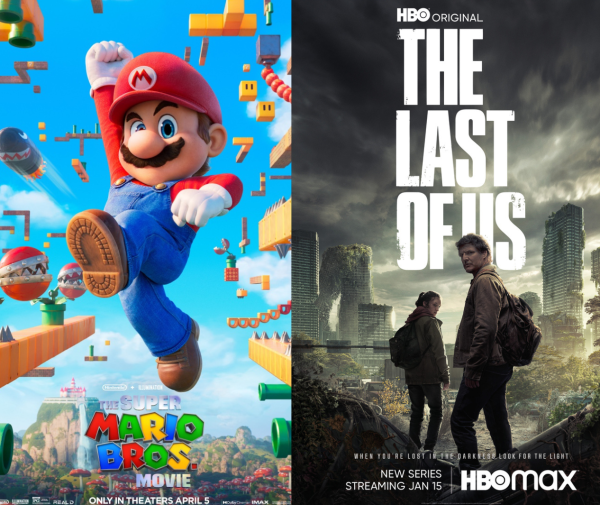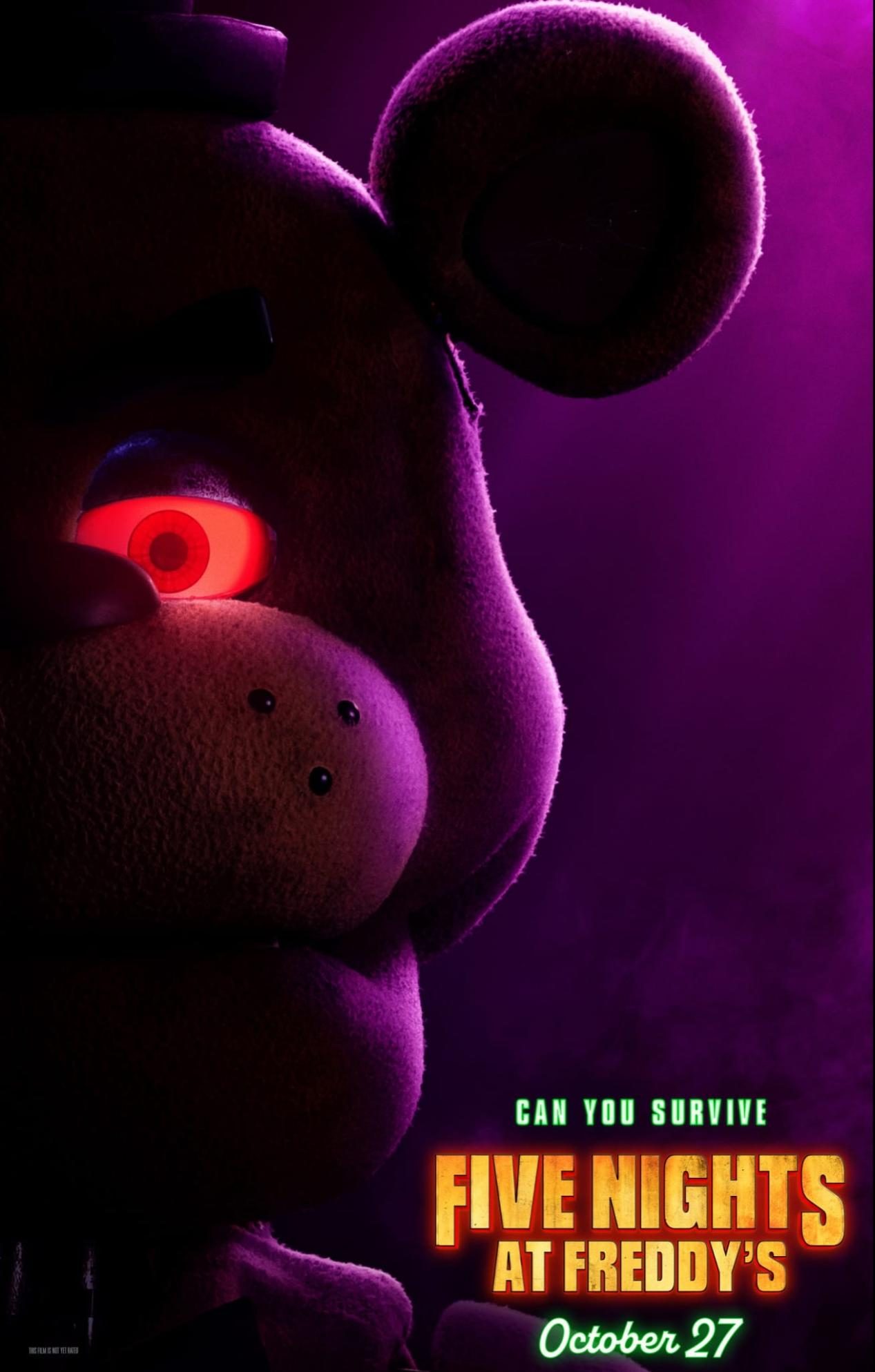The most current piece in the ever-expanding “Five Nights at Freddy’s” realm is a film adaptation that is a strange Frankenstein of a movie covering multiple games in the popular gaming series and presenting them as one complete story.
Is it good? Not really. Does it make sense? Not at all. But it is a big moment for gamers as a whole, and the lead-up to this film requires some context.
The first game in the series was simple enough, and even limiting to some degree. The player is a security guard tasked with the night shift of a family-friendly pizzeria called Freddy Fazbear’s Pizza. The catch here is that these “Chuck E. Cheese”-like animatronics are able to freely walk through the restaurant at night and develop strangely violent tendencies.

Though for the player, there is no movement, just swinging the mouse back and forth to close and open doors, and occasionally flipping through cameras to check on the animatronics.
There is no tutorial, just some recorded phone calls from a previous employee that lay the groundwork for the series’ disturbing undertones.
The original FNAF is primitive and low-budget, yet I wouldn’t call it bad in the slightest. If anything, the game’s simplicity heightens the atmosphere.
Subtle sound cues that alert the player of animatronics moving around accompany the hazy camera feed players must watch over. Once an animatronic does get close to the security room, they stare into the room blankly.
The only thing stopping them is a door that drains a finite amount of battery with every second it’s closed. Combining these different gameplay systems of monitoring security cameras, listening for sound cues and managing the power develops a masterful sense of tension.
What the franchise is truly known for is its jumpscares, an element that is tacky, overdone and predictable in most modern horror. FNAF got it right, spurring an internet phenomenon.

They’re not necessarily scary for the content of the actual jumpscare, but for how the quiet moments of laser-focus and precision can be so suddenly interrupted by a shrieking animatronic enveloping the screen.
Hidden under all of this is a much more disturbing narrative. Kidnapped children, a murderous purple man and souls of the dead inhabiting the animatronics are just a few of the story beats of the original FNAF games.
It can get muddled up in many of the subtler details theorists have spent hours analyzing.
Is the purple guy actually the phone guy? What’s the deal with the bite of ‘87, or is it the bite of ‘83? Is everything that goes on in the games just a dream?
Inevitably, as a creator, you write yourself into a corner, especially given the current state of FNAF and how much media is crammed into one franchise.
This movie feels like it’s trying to connect a lot of dots (that were probably never meant to connect in the first place) in an attempt to set up a grander trilogy.
What results is a film adaptation lauded by fans of the games and dismissed by most others entirely.
The crux of the plot is based around the main character, Mike, and how his little brother went missing years ago. It is a faint reference to the purple guy from the games, but it doesn’t scream FNAF at all. It does have the office from the first game, the four core animatronics and even a cameo from MatPat of Game Theory.
Though it lacks a greater respect to the source material. When Mike gets a job at the pizzeria, he almost never checks the cameras or closes a door to stop the animatronics or pretty much anything that defines the games. The fear that the animatronics bring at first, dissipates entirely by the third act.
It struggles to find a good blend of original content for this movie and faithful nods to the games themselves. The reason fans like it at all is simply because it exists. An acknowledgment to gamers that puts yet another beloved franchise on the big screen.

The trend of video games getting major, big-screen adaptations has never been more popular with series’ like Mario, Sonic, Pokémon, Halo, Uncharted and The Last of Us all getting their own time in the spotlight. However, FNAF is different.
All the previously mentioned gaming franchises are made by big-budget, Triple-A developers. With the popularity of gaming as a whole these can seem to be inevitable realities of the industry. Yet, FNAF was a low-budget indie that was almost entirely popularized through internet let’s-plays and word of mouth.
How this series ended up as a major motion picture especially given the rocky path up to release is a real achievement.
The series creator, Scott Cawthon has had an interesting arc himself.
Years prior to the success of FNAF, Cawthon, a devout Christian, released various religious games, though these saw little to no success. He went on to release cheap, free-to-play mobile games, but those too only saw marginal success, bringing in $40 to $50 a month for him.
To support his family he took up retail jobs and other programming work and it wasn’t until later that the first rumblings of FNAF would occur.
Cawthon’s 2013 release, Chipper & Sons Lumber Co. was not even remotely successful, yet Cawthon gained one of the most valuable pieces of FNAF lore from the game’s early critics. With how the game’s supposedly cheery animal characters looked like creepy animatronics.
Whether this caused a crisis of faith or a simple drive to prove people wrong, it spurred the first FNAF about one year later featuring animatronic creatures aesthetically similar to the ones in Chipper & Sons Lumber Co.
Cawthon has come a long way from his early days of developing family-friendly Christian titles to producing a major motion picture based on a franchise about murderous animatronics.
The FNAF movie does a lot for the franchise, but less for the lore itself. Scott Cawthon’s fingerprints are all over the movie with him allegedly throwing out many writers and directors who didn’t align with his creative vision.
It makes it even harder to understand that after all that, this is the finished product that took over eight years to develop.
Still, it is a monumental step for Cawthon, FNAF and indie-horror as a whole. The film’s plot is the one real thing holding it back and one can only hope the later films in this prospective trilogy will be as captivating in premise and faithful in theming as the games’ deeper, original lore.



